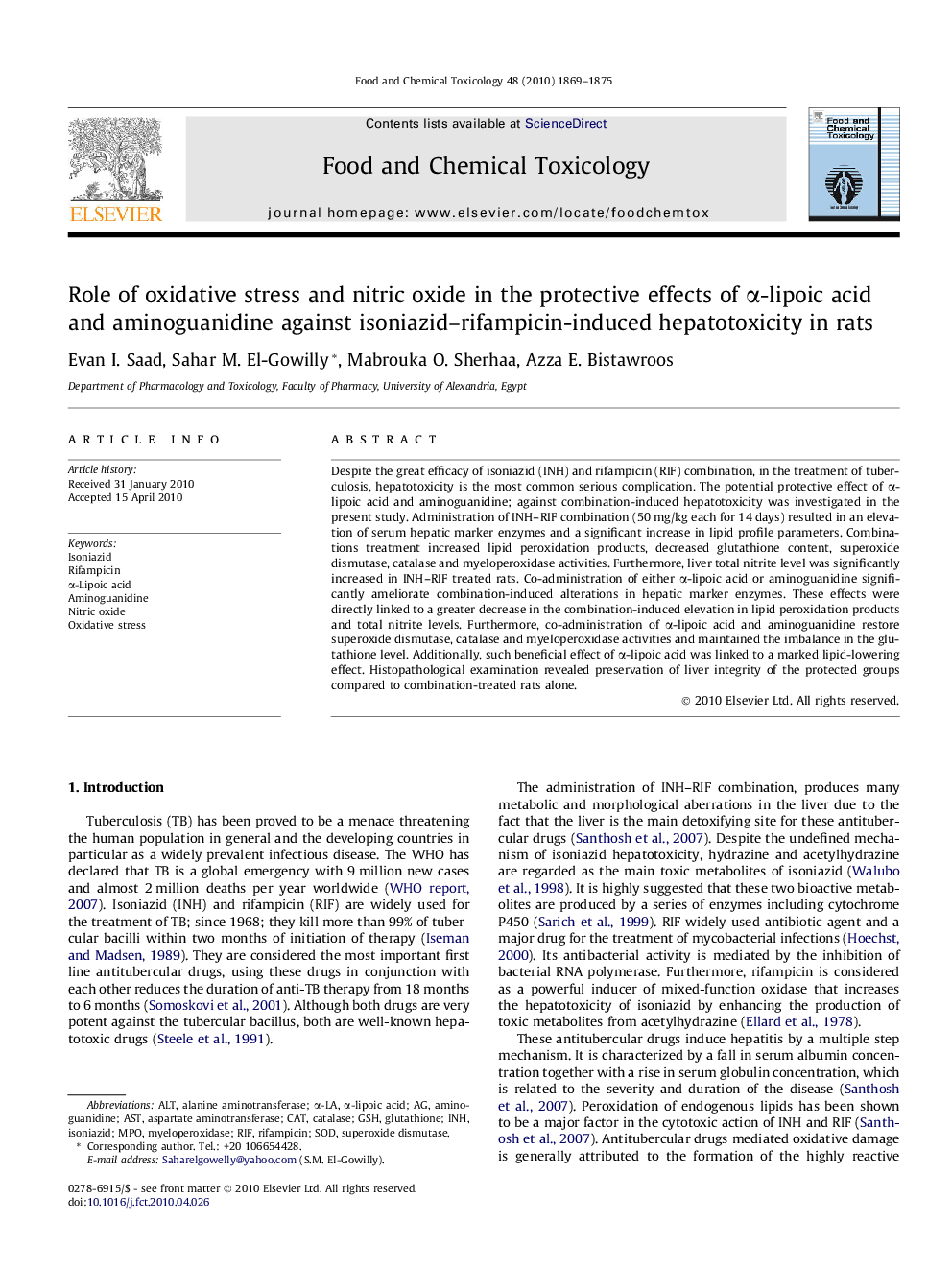| Article ID | Journal | Published Year | Pages | File Type |
|---|---|---|---|---|
| 2585740 | Food and Chemical Toxicology | 2010 | 7 Pages |
Despite the great efficacy of isoniazid (INH) and rifampicin (RIF) combination, in the treatment of tuberculosis, hepatotoxicity is the most common serious complication. The potential protective effect of α-lipoic acid and aminoguanidine; against combination-induced hepatotoxicity was investigated in the present study. Administration of INH–RIF combination (50 mg/kg each for 14 days) resulted in an elevation of serum hepatic marker enzymes and a significant increase in lipid profile parameters. Combinations treatment increased lipid peroxidation products, decreased glutathione content, superoxide dismutase, catalase and myeloperoxidase activities. Furthermore, liver total nitrite level was significantly increased in INH–RIF treated rats. Co-administration of either α-lipoic acid or aminoguanidine significantly ameliorate combination-induced alterations in hepatic marker enzymes. These effects were directly linked to a greater decrease in the combination-induced elevation in lipid peroxidation products and total nitrite levels. Furthermore, co-administration of α-lipoic acid and aminoguanidine restore superoxide dismutase, catalase and myeloperoxidase activities and maintained the imbalance in the glutathione level. Additionally, such beneficial effect of α-lipoic acid was linked to a marked lipid-lowering effect. Histopathological examination revealed preservation of liver integrity of the protected groups compared to combination-treated rats alone.
